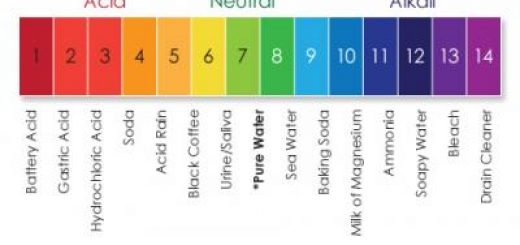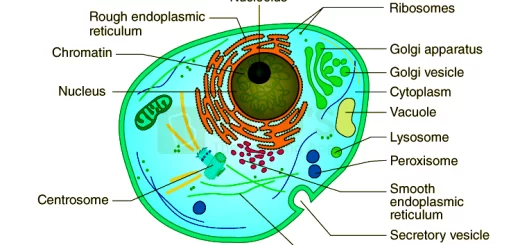Cellular respiration, Structure of ATP and types of fermentation
Gas exchange is the process of obtaining oxygen either directly from the air as in the case of unicellular organisms or by a respiratory system as in the case of multicellular organisms and releasing CO2 as a final product of respiration.
Cellular respiration
Cellular respiration is the process by which the living organism’s cells extract the energy stored in the chemical bonds of food molecules, especially sugars (glucose) that are manufactured by plants or eaten by animals, then this energy is stored in the form of ATP molecules to be used in performing the different activities.
Cellular respiration starts by the oxidation of glucose molecules, The glucose molecule is considered an excellent example to study the steps of breaking down food molecules, as it is used commonly by the majority of living organisms to produce energy more than any other molecules of available food, Most stages of the oxidation process of glucose molecule occur inside the mitochondria.
Glucose (as well as other carbohydrates) is considered as a form of stored energy, also it is a form by which the energy transfers from one cell to another and from one living organism to another.
Structure of ATP
To understand how ATP performs its function, we have to study its structure, The molecule is built up of three sub-units which are :
- Adenine: a nitrogenous base (it has the properties of a base).
- Ribose: a 5-carbon pentose sugar.
- Phosphate group: each molecule of ATP has three phosphate groups linked together by bonds.
ATP molecules are considered as the universal currency of energy in the cell, as any energy required by a cell needs ATP which changes into ADP (adenosine diphosphate), an amount of energy (which is about 7-12 kcal/mole) is released.
Aerobic cellular respiration
It is the principal route for obtaining the energy in the majority of living organisms in the presence of oxygen, The oxidation of one mole of glucose produces energy of 38ATP, this can be illustrated by the following equation.
C2H12O6 + 6 O2 → 6 CO2 + 6 H2O + 38 ATP
The oxidation of glucose molecules takes place in three major stages:
- Glycolysis occurs in the cytosole of cell.
- Krebs cycle occurs inside the mitochondria.
- The electron transport chain occurs inside the mitochondria, as it the mitochondria contain the respiratory enzymes, water, co-enzymes, and phosphate groups, Electron carries molecules or Cytochromes that carry the electrons at different energy levels, where the hydrogen atoms are removed from the carbon skeleton of a glucose molecule to be passed to the co-enzymes which act as the hydrogen carries (as NAD+ and FAD).
The most important co-enzymes are:
NAD+ which is reduced into NADH
NAD+ + H2 → NSDH + H+
FAD which is reduced into FADH2
FAD + H2 → FADH2
Glycolysis
Glycolysis occurs in the cytosole (non-organelle part cytoplasm) of the cell, It takes place in both aerobic and anaerobic respiration to produce energy, where the stages of glucose breakdown occur in the absence (or lack) of oxygen, so, these reactions are called anaerobic respiration.
The glycolysis of glucose occurs as follows: One molecule of glucose is broken down into two molecules of pyruvic acid (3-carbon) through a group of reactions.
- Glucose is converted into glucose 6-phosphate.
- Glucose 6-phosphate is converted into fructose 6-phosphate, then fructose 1,6-diphosphate which forms two molecules of PGAL (phosphoglyceraldehyde) to be oxidized into two pyruvic molecules.
These reactions are accompanied by (for each molecule of glucose):
Reduction of two molecules of the co-enzymes NAD+
2 NAD+ → 2NADH
Production of two molecules of ATP in the cytosole of the cell.
The equation of reaction:
C2H12O6 → 2 C3H4O3 + 2 ATP (Anaerobic respiration, respiratory enzymes)
The energy produced:
Two molecules of ATP which are not enough to perform all the vital activities in living organisms, Therefore, in the presence of oxygen, the pyruvic acid passes into the mitochondria to produce more energy, this takes place in two stages which are Krebs cycle and Electron transport chain.
The importance of glycolysis: The production of two molecules of ATP, The obtaining of pyruvic acid which is used in both aerobic and anaerobic respiration.
Krebs cycle
The first scientist who described this cycle was Sir Hans Krebs in 1937, He won the Noble prize in 1953, It occurs inside the mitochondria, Before the entrance into the Krebs cycle, the following reaction occurs :
Each molecule of pyruvic acid is oxidized in the presence of co-enzyme A into acetyl Co-A and produces 2 molecules of NADH, and 2 molecules of CO2.
The acetyl groups resulting from the breaking down of fat molecules or protein molecules can combine with the co-A to join the Krebs cycle.
Krebs cycle takes place in many stages, which are:
- Each molecule of acetyl co-A joins the Krebs cycle, where its co-A splits off to repeat its role.
- The acetyl group (2C) combines with a 4-carbon compound (oxaloacetic acid), to form a 6-carbon compound (citric acid).
- The citric acid passes through three intermediate compounds, It starts with ketoglutaric acid (5C), then succinic acid (4C), then malic acid (4C), and at the end of the reactions, the citric acid is formed again, therefore Krebs cycle is called the citric acid cycle.
During one cycle, all these compounds are produced:
- Two molecules of CO2.
- Three molecules of NADH.
- One molecules of FADH2.
- One molecule of ATP.
Krebs cycle is repeated twice (one for each molecule of acetyl group), Krebs cycle does not need oxygen, because all the electrons and protons are removed during the oxidation of carbon atoms and received by NAD+and FAD molecules.
The importance of the Krebs cycle
The oxidation of carbon atoms through a group of reactions by removing the electrons through the intermediate compounds which are received by the co-enzymes (NAD+and FAD) and then these co-enzymes transfer them to the cytochromes to release the energy and form ATP molecules.
Electron transport chain
The terminal stage of aerobic respiration that starts at the end of the Krebs cycle, It occurs inside the mitochondria, Electron transport chain occurs in many stages as follows:
Hydrogen and high-energy electrons carried by NAD+and FAD are transported over certain sequences of co-enzymes called cytochromes ( electron carriers ) that are present inside the inner membrane of mitochondria.
Cytochromes are sequences of co-enzymes present in the inner membrane of mitochondria that carry the electrons at different energy levels, The cytochromes carry the electrons at different energy levels, These high-energy electrons are passed from one molecule of cytochrome to another, during that the energy is released to form ATP from ADP and a phosphate group, This process is called oxidative phosphorylation.
Oxidative phosphorylation is the process by which ATP is formed from ADP and a phosphate group by using the energy released during the passage of electrons (that are carried on cytochromes) from a high-energy level to a low-energy level.
Two electrons combine with 2H+ and one oxygen atom to form a water molecule, So, oxygen is considered as the last receptor in the electron transport chain.
2é + 2H+ + ½ O2 → H2O
Each NADH molecule produces three molecules of ATP, while each FADH2 molecule produces two molecules of ATP.
The importance of the electron transport chain: Releasing the energy stored in NADH and FADH2 through the passage of electrons over a sequence of cytochromes and using produced energy to form ATP from ADP.
Calculation of ATP
In aerobic respiration, each molecule of glucose produces 38ATP:
Two molecules in the cytoplasm of the cell (produced during the glycolysis), and 36 molecules in the mitochondria (during the respiration stage).
Anaerobic cellular respiration
Anaerobic respiration (Fermentation) is a process by which the living organism obtains energy from the food molecule (glucose) in the absence or lack of oxygen with the help of special enzymes and this produces a small quantity of energy (2ATP molecules).
Stages of anaerobic respiration (fermentation).
- Glucose is decomposed into two molecules of pyruvic acid with the production of two molecules of NADH and two molecules of ATP.
- Pyruvic acid is converted into lactic acid or ethyl alcohol according to the type of cell in which it was formed and this is called fermentation.
Types of fermentation
Types of fermentation are Acidic fermentation and Alcoholic fermentation
Acidic fermentation
As in animal muscular cells and bacteria, In the muscle fibers, when the muscles exert vigorous efforts or exercises, they consume most of the oxygen in their cells and tend to convert the pyruvic acid into lactic acid through its reduction by its combing with the electrons on NADH, This is known as muscular fatigue.
C6H12O6 → 2 C3H6O3 + 2 ATP (Acidic fermentation)
If oxygen is available, lactic acid is converted into pyruvic acid again, and then into acetyl co-A, In the case of bacteria, the pyruvic acid is converted into lactic acid in the absence of oxygen and many dairy industries depend on this type of fermentation as cheese, butter and yogurt industries.
Alcoholic fermentation
In yeast and some plant cells: Pyruvic acid is reduced into ethyl alcohol and carbon dioxide, This is used in the industry of some products.
C6H12O6 → 2C2H5OH + 2CO2 + 2 ATP (Alcoholic fermentation)
Seeds of angiosperms have the power to respire anaerobically, if they are kept under the anaerobic conditions.
Practical activity: Alcoholic fermentation
Procedures:
- Put a sugary solution ( or molasses diluted with water by a ratio of 1: 2) in a conical flask.
- Add a piece of yeast and mix it thoroughly.
- Close the flask with a stopper of rubber through which a delivery tube passes and dip the free end of the tube into a beaker containing lime water.
- Leave the apparatus in a warm place for several hours.
Observation:
- Gas bubbles are seen on the surface of the solution in the flask.
- The release of alcohol odour from the flask.
- Lime water has become turbid.
Conclusions:
- Yeast does anaerobic respiration, So, CO2 is produced that causes the turbidity of lime water and the sugary solution turns into alcohol.
- Yeast does anaerobic respiration in the absence of O2 and this is called alcoholic fermentation.
Role of the respiratory system in the excretion process in man and Respiration in plant
Carbohydrate Metabolism, Importance and Hormonal regulation of glycolysis













